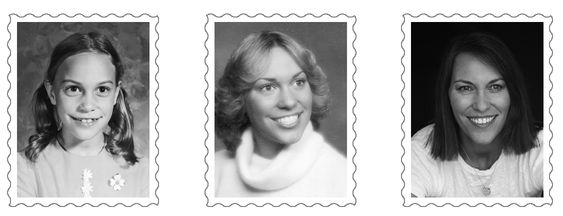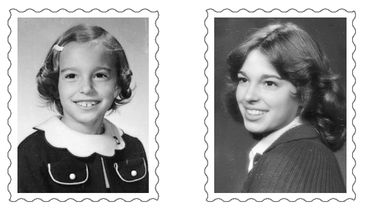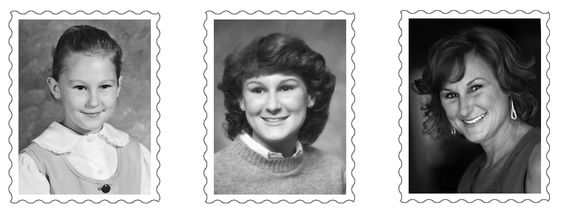The Girls from Ames (2 page)
Read The Girls from Ames Online
Authors: Jeffrey Zaslow

In some ways, Jenny’s story was like so many of the others. She shared a few details about how the eleven Ames girls met, some as early as infanthood in the church nursery, and how they feel bonded forever. But her short, tossed-off note didn’t fully reveal how extraordinary those bonds have become—I’d learn all that later—and she didn’t even tell any of her friends she had written to me. Jenny ended her email by saying that she appreciated my take on female friendship. She also paid me a compliment: “You really seem to understand women. Your wife is very lucky indeed.”
My wife would have to speak to how lucky she is or isn’t, but I can say this: I do feel an almost urgent need to understand women. That’s mostly because I am the father of three teenagers, all daughters.
I have seen my girls pout and fret and cry over friendships in turmoil, and I have seen how their friends have buoyed them at their lowest moments. At times, their sweetest friends have turned into stereotypical mean girls. At other times, former mean girls turn into friends. As a parent witnessing it all, I often feel helpless and exasperated.
Having observed how my mother, sister and wife built lovely friendships over the years, I naturally hope that my daughters can be as fortunate. When I think about their futures, I want them to feel enveloped by people who love them, and I know they’ll need close, loving friends at their sides. (I’m also aware that men’s friendships are completely different. I’ve been playing poker with a group of friends every Thursday night for many years. About 80 percent of our conversations are focused specifically on the cards, the betting, the bluffing. Most of the rest of the chatter is about sports, or sometimes our jobs. For weeks on end, our personal lives—or our feelings about anything—never even come up.)
There have been many self-help books designed to help women find and navigate friendships. Scholarly books have been written, too. And of course bestselling novels have won huge audiences by focusing on the sisterhood among fictional women.
But as a journalist, I know there’s great power in honest stories about real people. So, over time, I found myself intrigued by the idea of asking one articulate group of long-standing friends to open their hearts and scrapbooks, to tell the complete inside story of their friendship. I had a real sense that a nonfiction narrative—the biography of a friendship, meticulously reported—could be a meaningful document for female readers. Perhaps it would also help me understand my daughters, my wife and the other women in my life.
And so in the summer of 2006, I returned to that filing cabinet, and went through all the emails from women describing their friendships. I read them again, building a short stack of possibilities. I contacted many of the letter writers, and they were all very eager to share their thoughts.
They told me that when women think about their friends, they find themselves pondering every part of their lives: their sense of themselves, their choice of men, their dependence on other women, their need for validation, their relationships with their mothers, their dreams for their daughters . . . everything.
Many of these women shared beautiful anecdotes with me. They all said their friends could certainly fill a book. But once I called Jenny and spoke to her for a while, I had a sense that she and the ten other girls from Ames had a sweeping and very moving story to tell. That was confirmed when I eventually met each of them. They were born at the end of the baby boom and their memories are evocative of their times. Born in the middle of the country, they now live everywhere else, but carry Ames with them. Their story is universal, even common, and on that level it can’t help but resonate with any woman who has ever had a friend. And yet some of their experiences together are so completely one-of-a-kind—haunting and touching and exhilarating—that I found myself feeling spellbound as they talked to me.
The Ames girls were intrigued by the idea of a book about them, but understandably, several were hesitant at first. It is not an easy decision to reveal your life to a journalist (and eventually to the world), and I tried to move slowly and respectfully with them. Turning their lives into an open book, I said, would be a journey for them and for me. I wanted to know vital details of their interactions, the good and the bad. I’d ask them about the times they showed each other great care and compassion. But I also wanted them to reflect on the times they disappointed each other or were purposely unkind. How did they overcome those moments and remain so close for so long?
A few of them feared that my reporting for the book might bring up old ghosts or highlight long-ago misdeeds or challenge their assumptions about themselves. I asked them to take that risk with me. Yes, I hoped that the finished book would honor and strengthen their friendships. But I couldn’t guarantee that everything would go smoothly and that no one would get hurt.
We began with tentative steps. One by one, often in long phone conversations after they tucked their kids into bed, they talked to me about their loving feelings for each other, the rougher times between them, and about how their story, if told well, could benefit other women of all ages. I decided to take a year-long leave from my job at the
Journal
, so I could travel around the country spending time with them. I immersed myself in their lives, asking them to think back, to think hard, to force themselves to remember everything as clearly and honestly as they could. Why did they choose each other? Who were they then, and who are they now? They all turned out to be so articulate, so able to find perspective and broader truths. Because of that, compiling their story became a remarkable experience for me as a journalist.
Journal
, so I could travel around the country spending time with them. I immersed myself in their lives, asking them to think back, to think hard, to force themselves to remember everything as clearly and honestly as they could. Why did they choose each other? Who were they then, and who are they now? They all turned out to be so articulate, so able to find perspective and broader truths. Because of that, compiling their story became a remarkable experience for me as a journalist.
As we got to know each other, the Ames girls became more comfortable with me. In time, they let me read hundreds of pages of secrets locked in their old diaries. They shared stacks of letters and emails they had exchanged. They introduced me to their parents, children, siblings, husbands and old boyfriends. They even pointed me toward women outside their group who saw them as a clique and didn’t much like them.
Born in 1962 and 1963, they spoke vividly about what it was like to be girls in the sixties and seventies, young women in the eighties and new mothers in the nineties. They offered up countless examples of how close female friendships can shape every aspect of women’s lives.
Almost all of the Ames girls are scrupulous savers, chronicling their lives together in scrapbooks and photo albums, holding on to whatever memorabilia marked their friendship. That was a huge help in piecing together their story. Because I had their diaries, letters, concert ticket stubs and notes passed in homeroom, I was able to track many of their interactions to the exact day and even the exact hour. I felt like an archaeologist, sifting through crumbling prom corsages, looking for meaning.
Of course, there were plenty of challenges. When I’d tell people about this project, some wondered whether it was an appropriate task for a man. Could a man ever really understand women’s friendships? It was a fair point. And I admit that I sometimes asked the Ames girls questions that were silly, obvious or naïve. I’d catch them trading glances, and I knew that they were thinking: “This guy doesn’t get it, does he?” And yet I also think that being a man gave me a wider canvas. I was often inquisitive in ways a female interviewer would not have been. I made no assumptions. I asked. I rephrased. I tried to comprehend. On some fronts, my outsider’s curiosity helped enrich the story you’re about to read.
In the end, the girls and I agreed that to make the project work, it had to be based on a great deal of trust between all of us. We worked to build that trust, interview by interview, recollection by recollection, sometimes with tears, sometimes with great laughter.
Karla, Kelly, Marilyn, Jane, Jenny, Karen, Cathy, Angela, Sally, Diana, Sheila.
Theirs is the story of eleven little girls and the women they became. I feel privileged to have this opportunity to tell it.
A Guide to the Ames Girls
(Childhood photos on left, high school graduation photos in center, current on right)
Marilyn

The doctor’s daughter; earnest, risk-averse, a bit of an outsider in the group; closest to Jane. Now she is a stay-at-home mom in Minnesota.
Karla

Adopted at birth; lively and lovable, but as a girl, not always sure of herself; first to have a child (her daughter Christie). Now she’s a stay-at-home mom.
Sheila

The dentist’s daughter; considered the sweetest of the girls growing up; an incorrigible flirt. She left Ames for Chicago to help families with ill children. Never married.
Kelly

Free spirit of the group and the most likely to surprise them with her words and actions. Now divorced, she is a high school teacher in Minnesota.
Jane

Smart, studious, bonded with Marilyn, and the only Jewish member of the group. Now she is a psychology professor outside of Boston.
Other books
Maxed Out by Daphne Greer
Rosa in Sparkle City by Poppy Collins
My Rock #7 (The Rock Star Romance Series - Book #7) by Taylor, Alycia
Lost Girls by Andrew Pyper
Vergil in Averno: Book Two of the Vergil Magus Series by Avram Davidson
Paradigm Rift: Book One of the Back to Normal Series by McWilson, Randy
What You Desire (Anything for Love, Book 1) by Clee, Adele
Buckskin Run (Ss) (1981) by L'amour, Louis
Strong Medicine by Angela Meadon
The Alpha Bet by Hale, Stephanie
